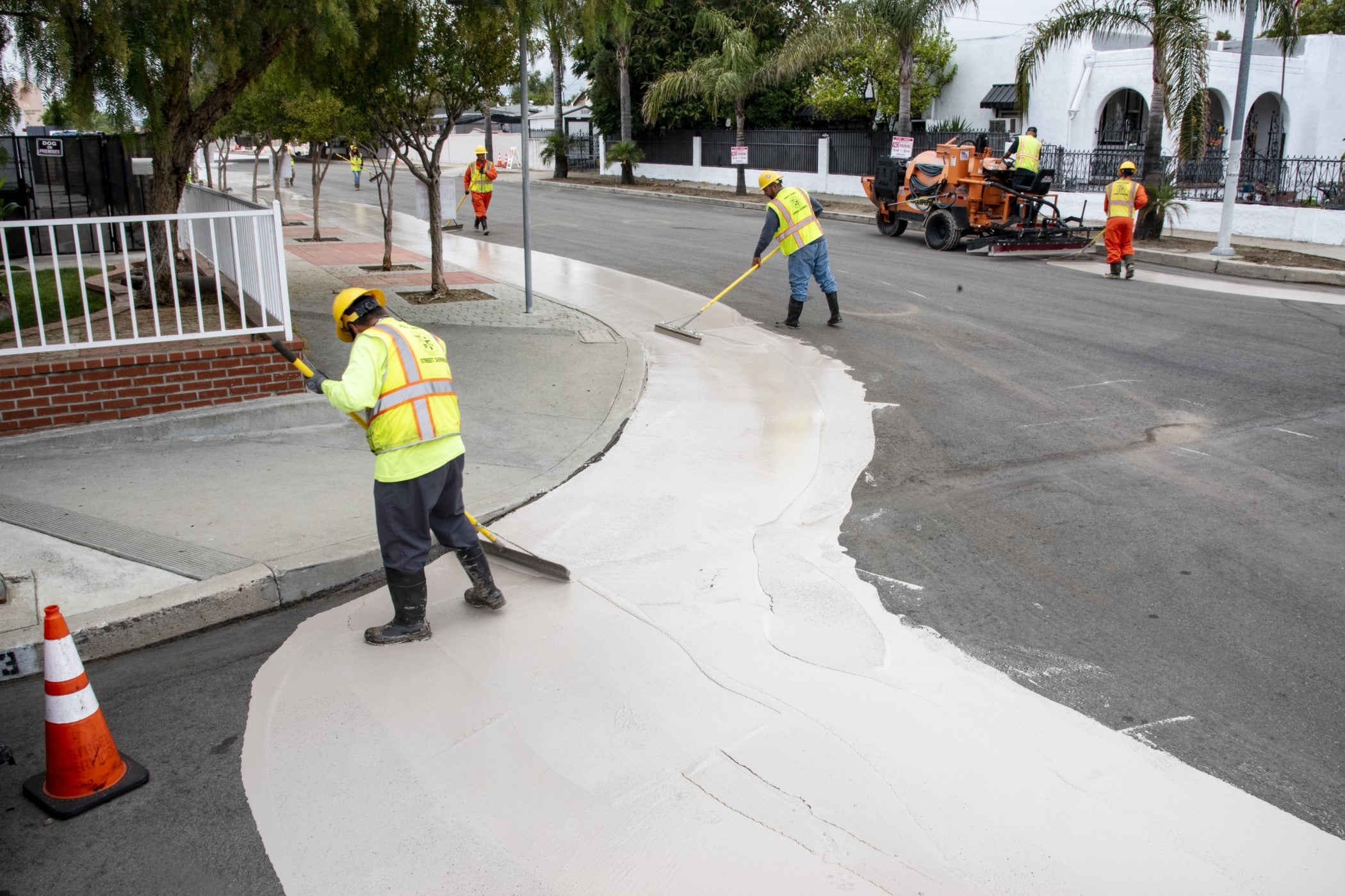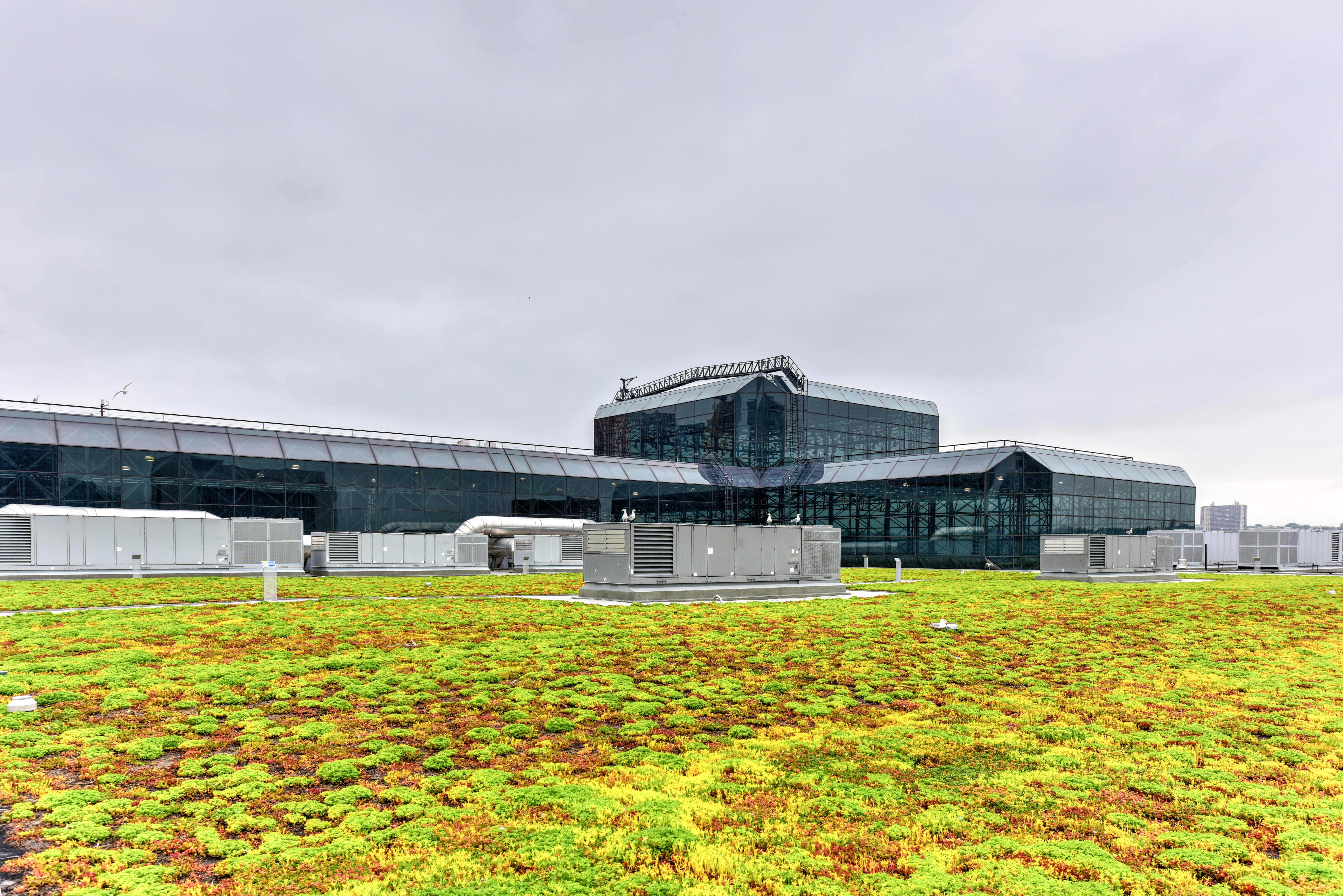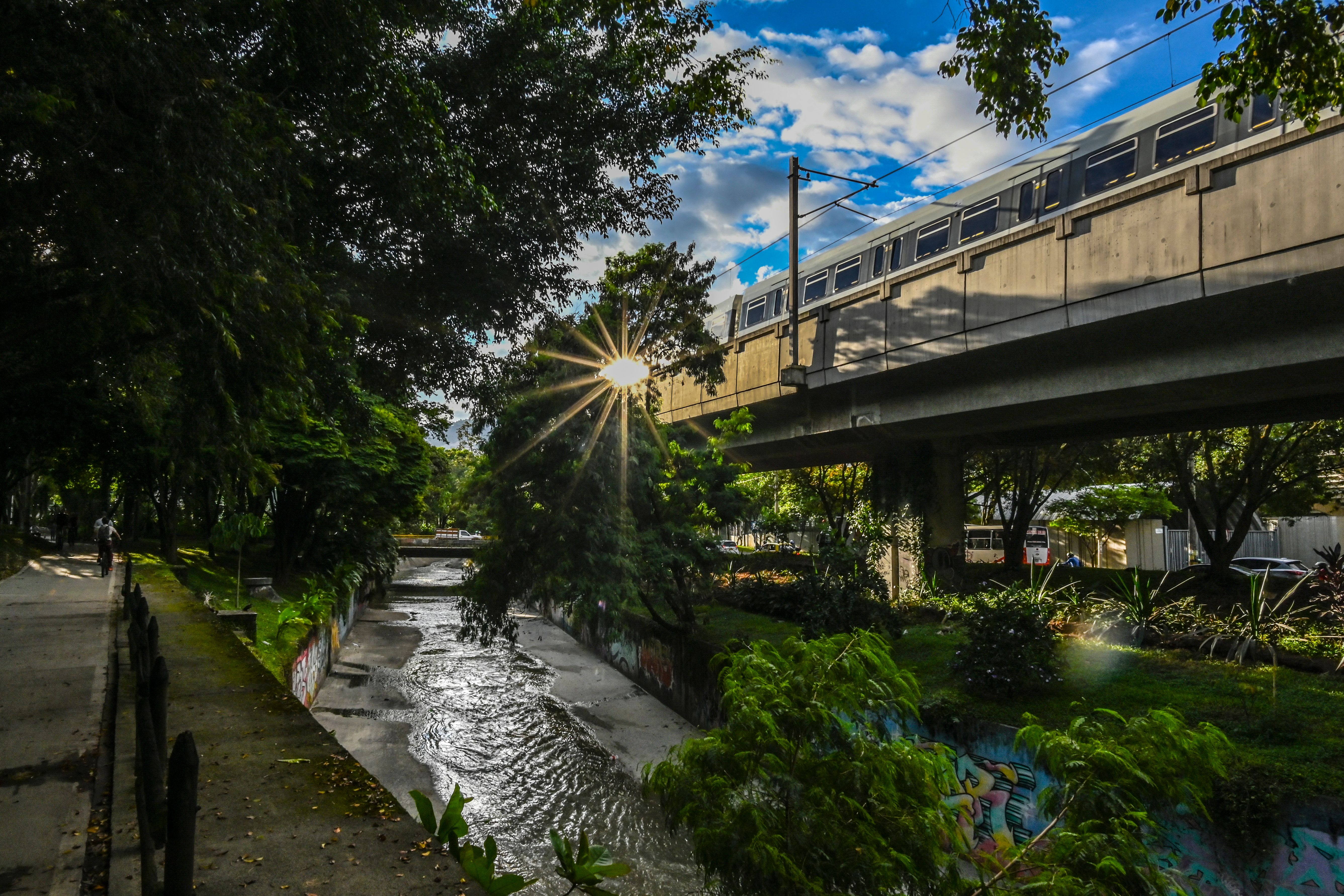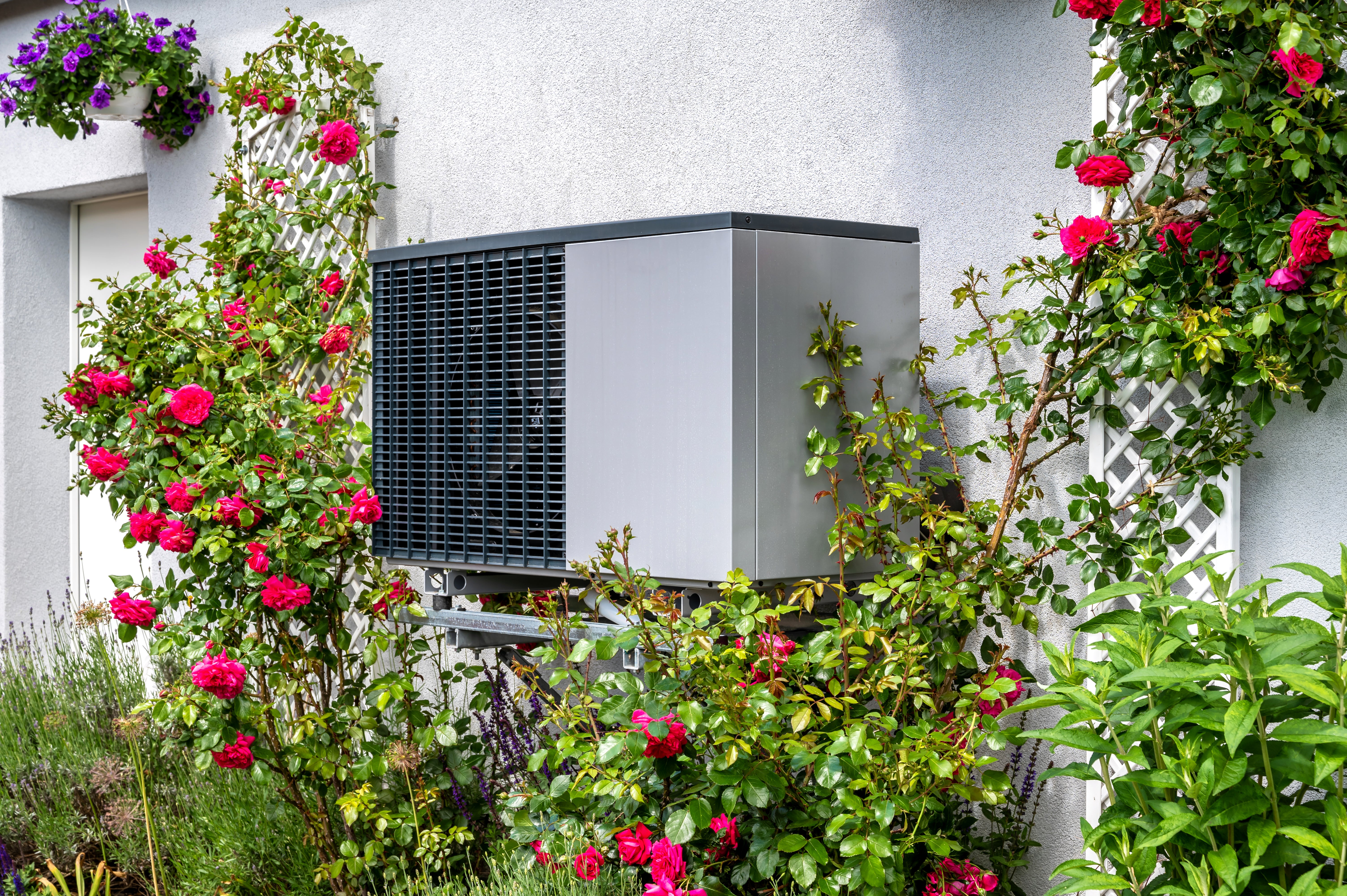Solutions for a hotter world: sunblock for pavements, armies of trees, and one 400ft hole
Cities will need to counteract the urban ‘heat island’ as the climate crisis spurs worse heatwaves
Your support helps us to tell the story
From reproductive rights to climate change to Big Tech, The Independent is on the ground when the story is developing. Whether it's investigating the financials of Elon Musk's pro-Trump PAC or producing our latest documentary, 'The A Word', which shines a light on the American women fighting for reproductive rights, we know how important it is to parse out the facts from the messaging.
At such a critical moment in US history, we need reporters on the ground. Your donation allows us to keep sending journalists to speak to both sides of the story.
The Independent is trusted by Americans across the entire political spectrum. And unlike many other quality news outlets, we choose not to lock Americans out of our reporting and analysis with paywalls. We believe quality journalism should be available to everyone, paid for by those who can afford it.
Your support makes all the difference.This summer has seen rolling, dangerous heatwaves across the US. The UK broke its all-time record high with 40.3 degrees Celsius (104.5 degrees Fahrenheit) on 19 July, while baking heat left over 1,900 people dead in Spain and Portugal.
Throughout spring, heatwaves in India and Pakistan killed at least 90 people and made birds fall out of the sky as temperatures reached 49C (120F).
The climate crisis means more potentially deadly heat around the world – and at the very least, far more uncomfortably hot days for millions.
That’s especially true in cities where all the concrete and asphalt absorb tons of heat, making urban areas vastly hotter than surrounding areas.
This phenomenon is called the “urban heat island” effect, and it can be significant. During the day, cities can be up to 7C hotter than the surrounding area, and up to 5C hotter at night, according to the US Environmental Protection Agency (EPA).
People are going to need to find new ways to beat the heat – and there are plenty of solutions cities can use to fight off the growing threat.
Sunblock for the road
During summer days, asphalt can reach up to 150F (67C), according to the EPA, partly because the road covering is often black or dark grey, colours that absorb a lot of sunlight.
Reducing the amount of sunlight those roads absorb can reduce how much heat it soaks up from the sun. That’s why cities like Los Angeles, California and Phoenix, Arizona have started applying a reflective, light-coloured coating on some roads.
In other words, it’s sunblock.

In Phoenix, the city government reported that the “sun-blocked” roads can be up to 12F cooler in the afternoon heat than regular roads. Even at night, the air above the road was half a degree cooler than the air above normal roads.
There is a potential drawback. Bloomberg reported that one study in LA found that treated roads can make people feel a bit hotter during the day. Since the road reflects more sunlight, some of that energy hits the people walking over it.
But some officials hope the roads can drop the temperature in cities overall, helping to reduce that heat island effect.
‘Cool’ roofs
Cities can also cover the roofs of buildings to keep them cool.
Dark-coloured roofs can make buildings a lot hotter and increase electricity bills due to the need for more air conditioning, according to the US Department of Energy (DOE). Like roads, darker roofs can reach up to 150F (67C) on a summer afternoon.
A more reflective roof could be 50F cooler, DOE says – and adapted using light-coloured or wooden shingles, as well as light clay or concrete tiles.
Some buildings use a reflective coating to keep temperatures down. For example in New York City, the Hunts Point Produce Market, a massive wholesale location in the Bronx, plans to paint its entire 800,000-square-foot roof with reflective white paint, The New York Times reported.
Another option for keeping roofs nice and cool is putting plants on them. So-called “green roofs” typically feature grasses or succulents on top of a building.
Vegetated rooftops can be between 30-40F cooler than regular ones, according to the EPA, and cool the entire building. They come with added benefits like filtering stormwater runoff, absorbing carbon dioxide and providing a natural habitat for native wildlife.

In Midtown Manhattan, the Javits Center, a massive, glass-walled convention centre, had had a green roof since 2014.
The roof now captures more than 80 per cent of the rainwater that lands on it, reduced energy consumption by 26 per cent in the building and turned New York City’s one-time biggest “bird-killer” into a wildlife haven.
Nature’s sunblock
In addition to fancy roofs and roads, there’s a pretty low-tech way to make a city cooler.
Tree-lined streets, parks, and other greenspaces are a lot cooler overall than areas heavy in manmade materials. Grassy areas don’t absorb as much heat as asphalt, and trees offer shade, keeping the sun off people and sidewalks.
Trees also dissipate heat by “evapotranspiration” – a process where plants disperse water into the air. Altogether, these processes make temperatures 9F cooler during summer, the EPA found.
These effects add up in greener neighbourhoods. The New York Times found that greener areas of cities like Baltimore, Maryland and Portland, Oregon could be nearly 15F cooler than less-green areas.

Some cities are working to put greenery back into the urban jungle. For example, Washington, DC has a goal of reaching 40 per cent tree coverage by 2032, up from about 38 per cent today.
In Medellín, Colombia, a network of “green corridors” around the city filled with trees and other plants has already reduced the urban heat island effect by 2C.
Going underground
Even with all of the above, there is still going to be excess heat to counteract.
Air conditioning units are one solution but many climate experts are championing a shift to heat pumps - which move heat in and out of a building - having a cooling effect in summer and warming in winter.
Transitioning homes from oil or gas furnaces to electric options can cut emissions – even more so if that electricity is generated by renewables like solar or wind power.

Some heat pumps use the ground as a kind of heat battery. These machines pump excess heat underground during the summer, where it is stored in the soil. During the winter, those same systems can pump that heat back up into the building.
By doing so, these “ground-source” heat pumps can save up to 50 per cent of energy costs for heating and cooling, DOE found.
Heat pumps can also be linked between buildings, like on a college campus. The University of California, Berkeley dug a 400-foot (122-metre) hole underneath campus this spring to study if this kind of heat-battery system could be installed.
The bottom line
More needs to be done to combat excess heat. The world has currently warmed about 1.2C since pre-industrial times and is on track to hit 2.7C by the end of the century, according to the Climate Action Tracker, an independent analysis of global climate policy.
As the planet’s temperature continues to rise, heatwaves will become hotter and more frequent, a recent UN report warned.
That means more people will likely suffer from health issues like heat exhaustion or heat stroke, a potentially fatal result of the body overheating.
These risks will make be more precarious for the elderly, young, pregnant, and those with underlying conditions.
One 2021 study estimated that between 2000 and 2019, nearly 500,000 people died as a result of extreme heat around the world.

Join our commenting forum
Join thought-provoking conversations, follow other Independent readers and see their replies
Comments